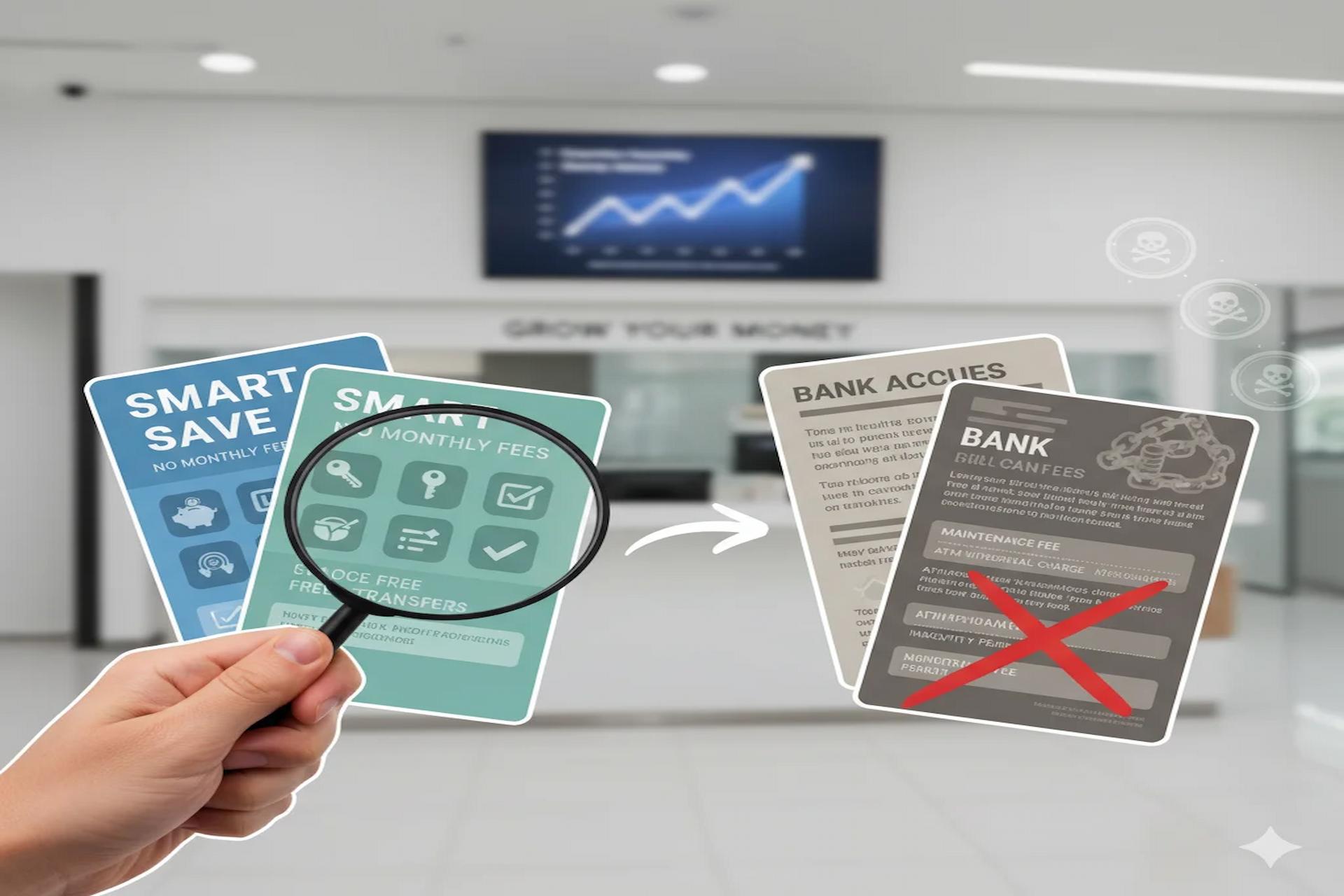
Introduction
Banking may not be the most exciting topic, but it’s one of the most important life skills. The right account can help you save money, build credit, and manage expenses — while the wrong one can quietly drain your balance with hidden fees. Whether you’re opening your first account or reassessing your current one, understanding the fundamentals of modern banking can make all the difference.
Here’s a clear, expert-backed guide to help you choose the right bank accounts, avoid unnecessary charges, and take control of your financial future.
1. Understand the Different Types of Bank Accounts
Before you sign up, know what each account type offers:
- Checking Account: Best for daily transactions, like bills and purchases.
- Savings Account: Designed to store money and earn interest.
- Money Market Account: A hybrid option offering better interest rates but limited withdrawals.
- Certificates of Deposit (CDs): Ideal for locking money away for a set period with fixed interest.
Tip: Choose based on your financial habits — a frequent spender needs a checking account, while savers benefit more from a high-yield savings account.
2. Compare Fees and Account Requirements
Hidden fees are a bank’s best-kept secret. Watch for:
- Monthly maintenance fees
- Minimum balance requirements
- Overdraft charges
- ATM withdrawal fees (especially at out-of-network ATMs)
Pro Tip: Many online banks now offer fee-free accounts. Always check the bank’s fee disclosure before signing up to ensure transparency.
3. Evaluate Interest Rates and Rewards
Your money should work for you. Compare Annual Percentage Yields (APYs) between banks — some online institutions offer over 4% interest on savings, far higher than traditional branches.
Also look for:
- Cashback rewards on debit card purchases
- Interest-bearing checking accounts
- Loyalty bonuses for consistent deposits
Remember: Even small interest differences can add up significantly over time.
4. Prioritize Online and Mobile Banking Features
In today’s fast-paced world, convenience is king. Choose banks that offer:
- Secure mobile apps for transfers and bill payments
- Instant spending notifications
- Mobile check deposits
- Budgeting and saving tools
A user-friendly digital experience saves time and helps you manage money more efficiently.
5. Check for FDIC (or FSCS) Insurance
Never risk your money with an uninsured institution. In the U.S., the Federal Deposit Insurance Corporation (FDIC) protects up to $250,000 per depositor, per bank. In the U.K., the Financial Services Compensation Scheme (FSCS) offers similar protection up to £85,000.
This insurance ensures that even if the bank fails, your savings remain safe.
6. Watch Out for Hidden or “Sneaky” Fees
Even reputable banks can surprise you with:
- Inactivity fees (charged if your account isn’t used regularly)
- Paper statement charges
- Excess transaction penalties
Tip: Opt for paperless statements and monitor your account monthly to spot any unusual deductions.
7. Consider Customer Service and Accessibility
A bank’s reputation isn’t just about rates — it’s about reliability. Look for:
- 24/7 customer support
- Local branch accessibility (if you prefer in-person service)
- Positive reviews for problem resolution
Good customer service can make or break your banking experience, especially during disputes or emergencies.
8. Reassess Your Banking Choices Regularly
Banks evolve — and so should you. Interest rates, offers, and fees change frequently. Review your accounts annually to ensure you’re still getting the best deal. Don’t hesitate to switch if you find a more beneficial option elsewhere.
FAQs
Q1. What’s the safest type of bank account?
Savings and checking accounts in FDIC- or FSCS-insured banks are the safest options for everyday use.
Q2. How can I avoid overdraft fees?
Set up balance alerts, link a savings account for overdraft protection, and monitor your spending through your bank’s mobile app.
Q3. Is online banking safer than traditional banking?
Yes as long as you use strong passwords, enable two-factor authentication, and stick to reputable institutions.
Conclusion
Choosing the right bank account isn’t just about convenience — it’s about protecting your finances, avoiding unnecessary fees, and maximizing your money’s potential. By comparing options, watching for hidden costs, and taking advantage of modern banking tools, you can build a stronger, smarter financial foundation for life.

